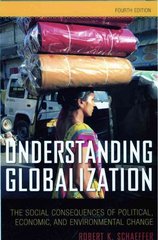kindly solve these. clearly show your steps
1. An exchange economy has two con sumers, A & B, and two types of goods, x & y. A has an endowment of x = 20 & y = 15, and B has an endowment x = 10 & y = 20. If after a trade A winds up with 18 units of x and 22 units of y, then B must have (xy) = (a.) (10,20) (b.) (12,20) (c.) (12,13) (d.) (10,13) 2. Consider the economy in problem 1. Assume that both A and B have the utility function u(xy) = xy. Then at the initial endowment, A has utility ___ and B has utility (a.) 350; 300 (b.) 22:27 (c.) 22: 37 (d.) 300; 200 3. Consider the economy in problem 1, where A & B both have u(xy) = xy. Starting at the endowment, say A and B engage in a trade. A gives 5 units of x to B in return for z units of y. How much does z have to be so A's utility does not change due to trade? (a.) 5 (b.) 7(b.) (12,20) (c.) (12.13) (d.) (10,13) 2. Consider the economy in problem 1. Assume that both A and B have the utility function u(xy) = xy. Then at the initial endowment, A has utility _ _ _ _ and B has utility (a.) 350: 300 (b.) 22:27 (c.) 22: 37 (d.) 300; 200 3. Consider the economy in problem 1 where A & B both have ulxy) = xy. Starting at the endowment, say A and B engage in a trade. A gives 5 units of x to B in return for z units of y. How much does z have to be So A's utility does not change due to trade? (a.) 5 (b.) 7 (c.) 9 (d.) 10.5 4. Once again, consider the economy in problem 1 where both A & B have u(xy) = xy. At the initial endowment, the MRS for consumer A is _ ___ _ and the MRS for B is __ (a.) 0.75; 1.5 (b.) 0.75; 2 (c.) 1.25: 2 (d.) 1.25; 1.5An exchange economy has two consumers, A & B, and two types of goods, x & y. A has an endowment of x = 20 & y = 15, and B has an endowment x = 10 & y = 20. If after a trade A winds up with 18 units of x and 22 units of y, then B must have (xy) = Assume that both A and B have the utility function u(x,y) = xy. Then at the initial endowment, A has utility and B has utility (a.) 350: 300 (b.) 22; 27 (c.) 22; 37 (d.) 300; 200 Graph and label it please, thanks!Consider the simple linear regression model: Y = XB + E, E~N(0,621). Using matrix notation: a) Derive the Least Squares vector of estimates for the model coefficients and find its expected value. b) Derive the estimated variance-covariance matrix (all four components) associated with model coefficients, i.e., cov(B).1. [Market Equilibrium] Following table shows information about the demand for 20 Ibs box of apples in the wholesale market. Price, P (5/box) Quantity Qd (boxes) 100 80 20 60 40 40 60 20 80 (a) Draw a graph with Price (P) on the vertical axis and Quantity demanded (Qd) on the horizontal axis? (b) Write the equation for this inverse demand function. (c) What is the quantity demanded when P = $50/box)? Following table shows information about the supply of 20 Ibs box of apples in the wholor sla market











